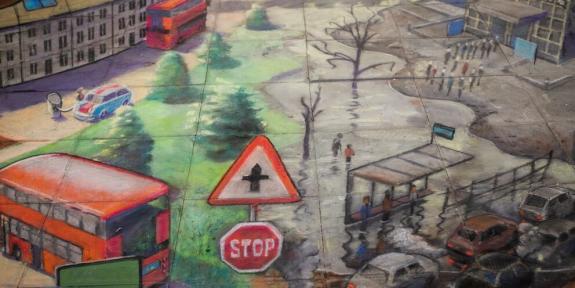Reducing emissions from transport
Stage: Latest newsRead more about what we can do to reduce air pollution all over London to help meet the updated World Health Organization (WHO) guidelines, address the climate emergency and tackle traffic congestion.
Closed
1501 Londoners have responded | 24/02/2022 - 27/03/2022

The challenge
Air pollution is not, and never was, just a central London problem.
In 2019, air pollution contributed to the premature deaths of more than 4,000 Londoners. Poor air quality stunts the growth of children’s lungs and worsens chronic illnesses such as asthma and lung and heart disease. The greatest impact, as a proportion of the population, falls in outer London boroughs, even though pollution levels there are relatively lower. This is mainly because of the higher proportion of older people in these areas who are more vulnerable to the health impacts of pollution.
We also know that air pollution affects the poorest communities the most. Londoners on lower incomes are more likely to live in areas of the city most affected by air pollution and least likely to own a car.
Between 2000 and 2018, London achieved a 57 per cent reduction in workplace greenhouse gas emissions and a 40 per cent reduction in emissions from homes, but just a 7 per cent reduction in emissions from transport.
These numbers show that we must do much more to reduce transport emissions, cut congestion and clean up London’s air. The capital will have to see a significant shift away from petrol and diesel vehicle use and towards walking and cycling, greater public transport use and cleaner vehicles. At the moment, just 2 per cent of vehicles on the roads in London are electric.
Delve deeper
Our approach
The World Health Organization (WHO) has recently updated its guidelines, recommending lower target levels for the main air pollutants. All levels of government must work together to achieve the new WHO guidelines and protect human health.
The Mayor has already taken action to tackle toxic air, carbon emissions and congestion in the capital. He introduced the Ultra Low Emission Zone in 2019 and then expanded it in 2021.
Given the damaging impact of toxic air pollution and the urgency of the climate crisis, the Mayor has asked Transport for London (TfL) to prepare for a public consultation on proposals to extend the Ultra Low Emission Zone even further to cover most of Greater London and tackle more of the dirtiest vehicles.
Policy team
The Mayor’s Environment team is working to tackle the most urgent environmental challenges facing our city, as well as safeguarding London’s environment over the longer term.
This includes delivering on the aims set out in the Mayor’s Environment Strategy by:
- tackling air pollution to go beyond the legal requirements to protect human health and minimise inequalities
- retrofitting buildings and decarbonising transport and energy to make London a net zero carbon city by 2030
- increasing London’s resilience to severe weather and longer-term climate change impacts including flooding, heat risk and drought
- protecting and enhancing London’s natural environment and network of green infrastructure
- working to create a circular economy to help London transition to a zero waste city where no biodegradable or recyclable waste will be sent to landfill.
The Mayor’s Transport team works with the Deputy Mayor for Transport and the Walking and Cycling Commissioner on behalf of the Mayor of London to deliver the Mayor’s Transport Strategy and ensure Transport for London’s capacity and funding is directed towards its delivery.
This includes:
- ensuring our public transport network runs safely and reliably
- enabling more Londoners to walk and cycle by improving streets and reducing road danger
- greening transport by reducing traffic and vehicle pollution and increasing use of renewable energy on the network
- unlocking growth and improving connectivity, putting walking, cycling and public transport at the heart of new developments
- making transport affordable and accessible for more people.